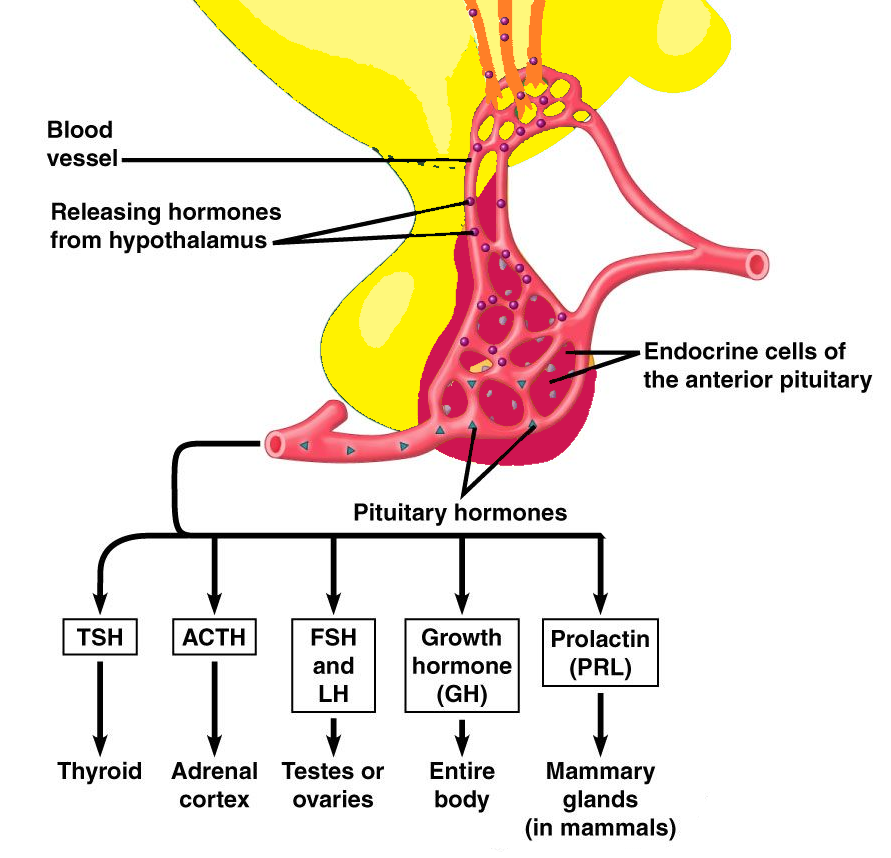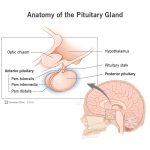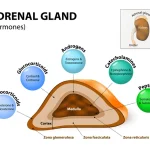The pituitary gland is often referred to as the “master hormone” because of its crucial role in regulating various bodily functions, from growth and development to metabolism and reproduction. But did you know that not all parts of the pituitary gland are created equal? In this blog post, we’ll delve into the fascinating world of the anterior part of the pituitary gland and explore which hormones it secretes.
The Importance of Understanding Pituitary Gland Function
A tiny but mighty gland located at the base of the brain, the pituitary gland plays a vital role in maintaining overall health. Its dysfunction can lead to a wide range of disorders, from growth hormone deficiencies to thyroid imbalances and even cancer. Therefore, it’s essential to understand how this gland functions and what hormones it produces.
The Anterior Pituitary Gland: The Main Event
The anterior part of the pituitary gland is responsible for producing six important hormones that regulate various bodily functions. These hormones include:
Adrenocorticotropic hormone (ACTH): Regulates the production of cortisol, a hormone crucial for responding to stress.
Prolactin: Involved in lactation and breast development during pregnancy and breastfeeding.
Growth hormone: Stimulates growth and cell reproduction, particularly during childhood and adolescence.
Thyroid-stimulating hormone (TSH): Regulates the production of thyroid hormones, which govern metabolism and energy levels.
Follicle-stimulating hormone (FSH) and luteinizing hormone (LH): Involved in reproduction, regulating ovarian function and triggering ovulation.
In our next section, we’ll dive deeper into the functions of each of these hormones and explore what happens when they’re imbalanced or deficient. Stay tuned!
The anterior part of the pituitary gland is responsible for producing six important hormones that regulate various bodily functions, including growth and development, metabolism, and reproduction. As we explored earlier, the pituitary gland plays a vital role in maintaining overall health, making it essential to understand how this gland functions and what hormones it produces.
The Role of ACTH: Regulating Cortisol Production
Adrenocorticotropic hormone (ACTH) is one such hormone produced by the anterior pituitary gland. Its primary function is to regulate the production of cortisol, a hormone crucial for responding to stress. When stress levels are high, ACTH stimulates the adrenal glands to produce more cortisol, helping the body cope with the physical and emotional demands.
Did you know that cortisol imbalances can have significant effects on overall health? For instance, chronic cortisol elevation can lead to weight gain, mood swings, and even immune system suppression. On the other hand, low cortisol levels can cause fatigue, insomnia, and decreased resistance to infection (1).
The Importance of Prolactin: Lactation and Breast Development
Prolactin is another essential hormone produced by the anterior pituitary gland. During pregnancy and breastfeeding, prolactin stimulates milk production and plays a critical role in breast development. This hormone also has other functions, such as regulating sleep-wake cycles and modulating immune responses (2).
The Growth Hormone: Stimulating Cell Reproduction
Growth hormone is a vital hormone produced by the anterior pituitary gland, responsible for stimulating growth and cell reproduction. This hormone is particularly important during childhood and adolescence, as it helps regulate bone growth and development. In adults, growth hormone plays a role in maintaining muscle mass and bone density (3).
The Thyroid-Stimulating Hormone: Regulating Metabolism
Thyroid-stimulating hormone (TSH) is another crucial hormone produced by the anterior pituitary gland. Its primary function is to regulate the production of thyroid hormones, which govern metabolism and energy levels. TSH stimulates the thyroid gland to produce thyroxine (T4) and triiodothyronine (T3), which are essential for maintaining proper metabolic function.
The FSH and LH: Regulating Reproductive Function
Follicle-stimulating hormone (FSH) and luteinizing hormone (LH) are two hormones that work together to regulate reproductive function. FSH stimulates the growth of ovarian follicles, while LH triggers ovulation and plays a role in the regulation of menstrual cycles.
In our next section, we’ll delve deeper into the functions of each of these hormones and explore what happens when they’re imbalanced or deficient. Stay tuned for part two of this series!
Get Expert Insights on Pituitary Gland Hormones
Seeking guidance from medical professionals? Our experts are here to help.
Consult with an ExpertIn conclusion, the anterior part of the pituitary gland is a complex and vital component of our endocrine system, responsible for producing six crucial hormones that regulate various bodily functions. From growth and development to reproduction and metabolism, these hormones play a significant role in maintaining overall health.
Understanding how they work together in harmony is essential for recognizing potential imbalances or deficiencies, which can have far-reaching consequences if left unchecked. By shedding light on the fascinating world of pituitary gland function, we hope to inspire readers to take an active interest in their own hormone balance and overall well-being.
As we conclude this journey into the anterior part of the pituitary gland, remember that a tiny but mighty gland like this one has a profound impact on our lives. By prioritizing pituitary health and fostering a deeper appreciation for its functions, we can take control of our bodies and minds, and unlock a brighter future.
Say goodbye to the anterior part of the pituitary gland – but not before it leaves you with a lasting impression! Join us in our next post as we explore the posterior part of this remarkable gland and uncover even more secrets about hormone production and regulation.
The estimating problem on page 734 and then answer the questions on page 735: Are you struggling to solve a complex math problem? This article walks you through the process of estimating and solving a specific problem, helping you build your confidence in tackling tricky math questions.
Big red itchy bumps on hands: Ever woke up with mysterious red bumps on your hands? This article explores possible causes and treatments for big, itchy bumps on your hands, helping you get to the bottom of what’s causing them.




